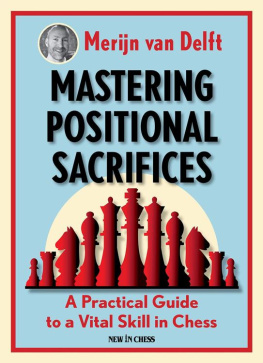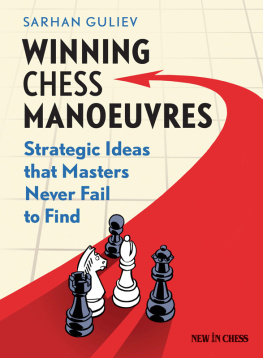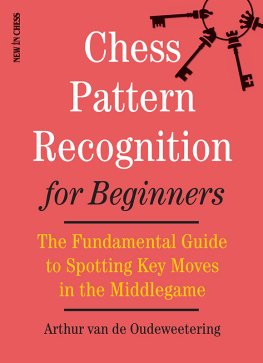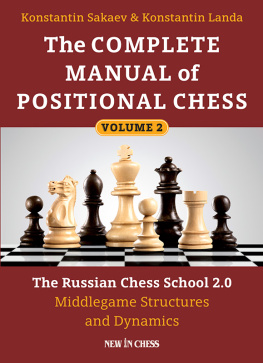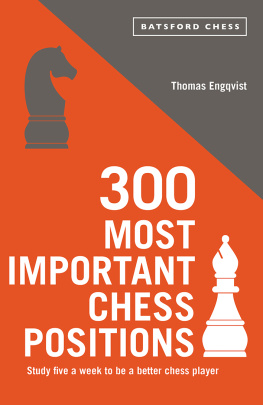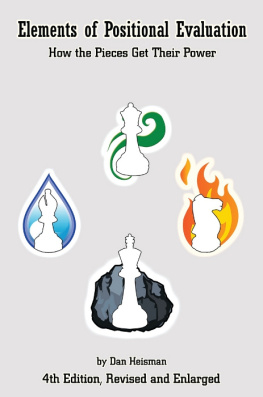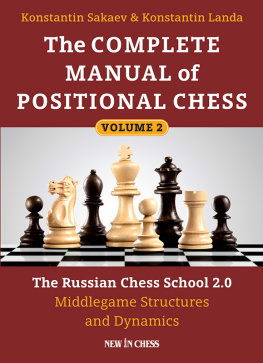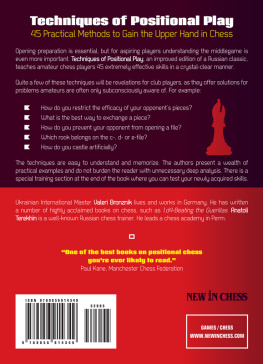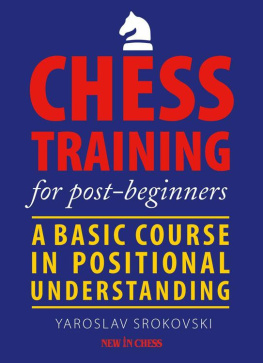Mastering Positional Sacrifices Merijn van Delft
Mastering Positional Sacrifices
A Practical Guide to a Vital Skill in Chess New In Chess 2020 2020 New In Chess Published by New In Chess, Alkmaar, The Netherlands www.newinchess.com All rights reserved. No part of this book may be reproduced, stored in a retrieval system or transmitted in any form or by any means, electronic, mechanical, photocopying, recording or other wise, without the prior written permission from the publisher. Cover design: Ron van Roon Editing, typesetting, supervision: Peter Boel Proofreading: Dennis Keetman, Ted Barendse, Dries Wedda Production: Anton Schermer Have you found any errors in this book? Please send your remarks to editors@newinchess.com. We will collect all relevant corrections on the Errata page of our website www.newinchess.com and implement them in a possible next edition. ISBN: 978-90-5691-883-5
Contents
Explanation of symbols The chessboard with its coordinates:
| White to move |
| Black to move |
| King |
| Queen |
| Rook |
| Bishop |
| Knight |
| White stands slightly better |
| Black stands slightly better |
| White stands better |
| Black stands better |
| + | White has a decisive advantage |
| + | Black has a decisive advantage |
| = | balanced position |
| ! | good move |
| !! | excellent move |
| ? | bad move |
| ?? | blunder |
| !? | interesting move |
| ?! | dubious move |
Introduction
Welcome dear reader, you are holding in your hands a chess book on strategy. My name is Merijn van Delft, I am an International Master from the Netherlands, born in 1979, and I have always been a chess trainer and coach, more than anything else.
I grew up in Apeldoorn, and have lived and worked in Amsterdam and Hamburg. I will be your guide on a very exciting tour along the most important strategic topics in chess. We will come across legendary battles and amazing concepts, covering everything from the old masters until the most recent developments. The title of this book is Mastering Positional Sacrifices. My favourite theme in chess has always been the positional sacrifice, so writing a book about it, about three decades after I first learned about this theme, feels like a natural thing to do. I am thrilled to share my thoughts with you on this exciting subject.
Definition As opposed to tactical sacrifices, positional sacrifices are of a more abstract, non-forcing and long-term nature. Positional sacrifices often have something mysterious about them, and when they work out well, they are beautiful. The secret lies in the fact that in chess it is not enough to simply count the pieces. Material, time and space are constantly interacting. Speaking of definitions, I do not believe in a strict definition of what a positional sacrifice is. I think it is a dimension, rather than a category.
A dimension that runs from purely tactical (concrete, short-term) to very positional (abstract, long-term) in the same way that open/closed and dynamic/static are useful dimensions to describe chess. Target audience My hope is that this book will be a pleasant read for many chess players. I am trying to write for as broad a readership as possible, but let me give a mild warning to beginning chess players: this book may not be the best place to start for you. However, I am sure it is worth returning to, once you have collected a little more chess knowledge and experience. Please have a look at the bibliography in the back of this book for a number of books I recommend. Playing regularly and analysing your own games with a chess trainer/coach is the well-established way to improve in chess.
Here is a mild warning for very experienced players as well: you may come across a fair amount of examples that you already know. I considered it my job to combine the most impressive classical games with new material, and to find a nice balance there. Smile if you recognize something, and contact me if I forgot a great example that should have been in the book. Who knows we can add it in a future edition. Reading guide A feel-good book is what this is meant to be. It should be fun to play through the games and the book can easily be used for entertainment purposes only.
If you are simply seeking inspiration, feel free to open it at a random page and check the diagrams. The most exciting moments are always covered with a diagram and described in the text that follows. Having said that, my main intention has been to present the material as systematically as possible. My goal was to create a unique framework of positional sacrifices. The structure should have an inner logic and should help the reader to build up his knowledge systematically. Reading the book from start to finish probably allows you to make the most of it.
I do realize that most chess students and chess enthusiasts rarely finish a book. They start full of ambition, but sooner or later everyday distractions prevail. My advice is to scan the diagrams, only play through the games that seem interesting to you, and save the rest for some other time. Studying this book should be an enjoyable experience, not a pain. Book structure Reading the book from start to finish is like time travelling from the old masters, via the World Champions, to the latest engines. We have just entered a new decade, and the most recent games I have included in the book were played at the Wijk aan Zee 2020 tournament.
The book consists of four parts. The first three parts contain a total of 115 carefully selected games and Part IV contains 48 well-tested exercises. Part I consists of Chapter 1-4 and discusses the fundamental themes: piece play, pawn structure, colour complex, domination. The inner logic is that we look at pieces, pawns and squares in turn, and the ultimate goal is domination. The first part of the book is designed to be a basic course in mastering positional sacrifices. Especially Chapter 3 on colour complexes can be a challenge for less experienced players.
Once youve made it through the first part of the book, you should have a good idea of what a positional sacrifice is. Part II consists of Chapters 5-6 and systematically treats typical positional sacrifices: pawn sacrifices and exchange sacrifices. These are the two types of sacrifice that occur so frequently that they can be considered standard instruments of positional play. The second part of the book is designed to consolidate and deepen our newly acquired knowledge. Knowing a few standard sacrifices makes it easier to recognize the possibility of sacrificing something in your own games and may give you more confidence in trying to do so. Part III consists of Chapters 7-9 and is about testing the limits.
Like with extreme sports, we are going to examine how far we can go when we sacrifice material. How much can we sacrifice, and what do we need in return? We will see how the strongest and most creative players in the history of chess have been willing to take considerable risks to test the limits. If you want to become a strong chess player, you will have to risk something, and you have to try out what is possible and what is not. This leads to a deeper understanding of the way material, time and space interact. Finally, we will look at what we can learn from chess engines and how we can use them for our training purposes. Part IV consists of Chapter 10 (Exercises) and 11 (Solutions to exercises), and contains our training material.
Next page
